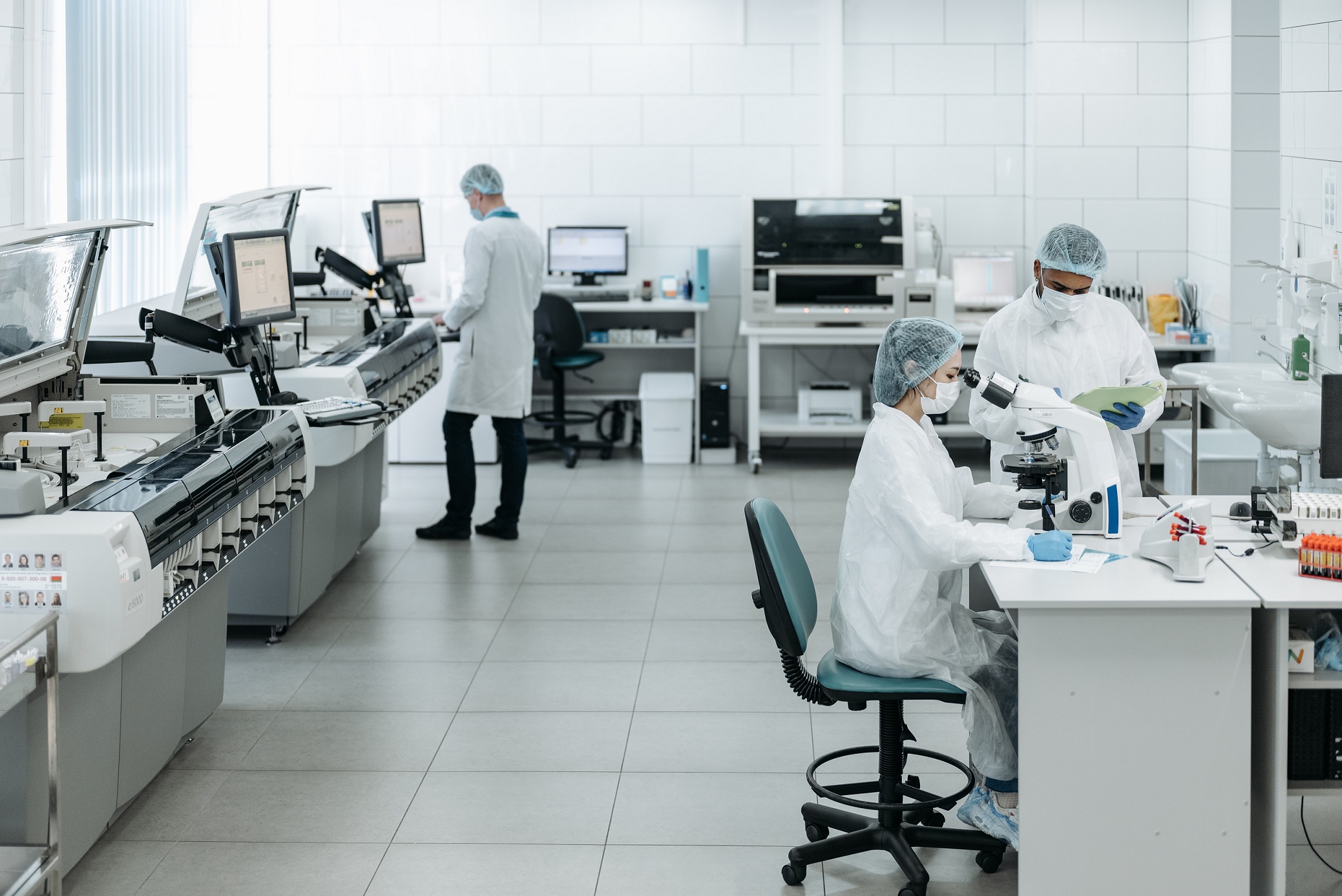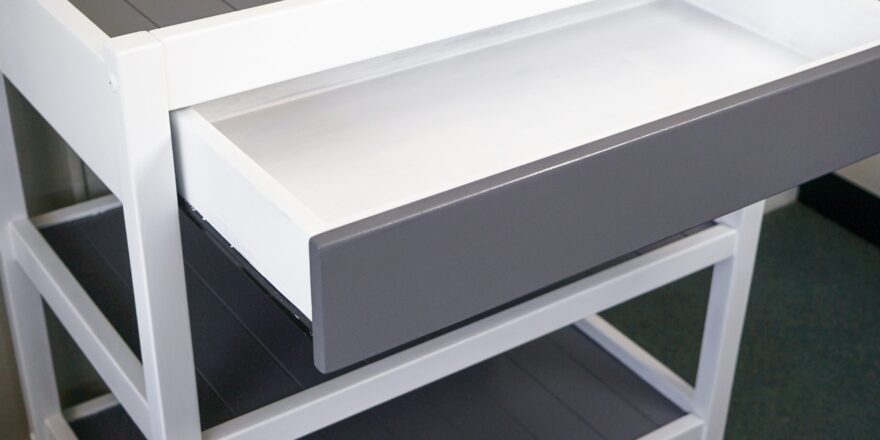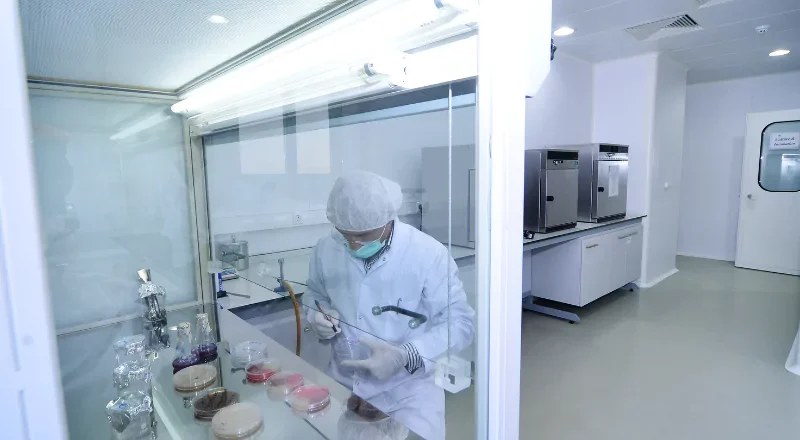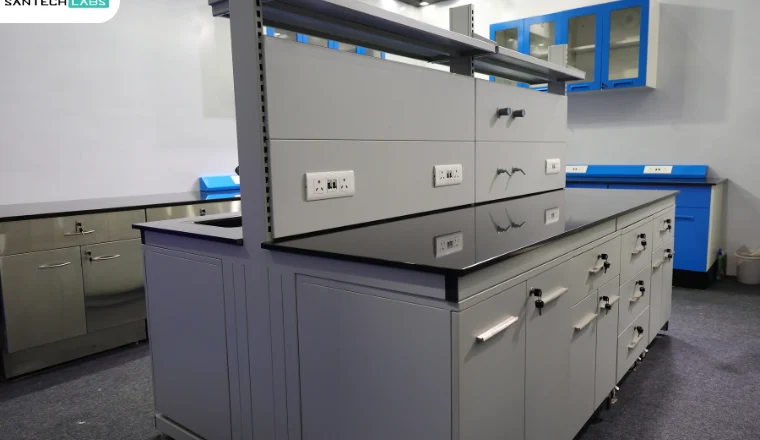When creating a functional and ergonomic laboratory workspace, the choice of lab furniture plays a crucial role. The lab table is a vital element that directly impacts productivity and user comfort among the various components. In today’s dynamic laboratory environment, height-adjustable lab tables have gained popularity for their versatility and adaptability. This blog aims to guide you through selecting modular lab furniture, allowing you to master the art of height adjustment for a productive and comfortable lab setup. But let us first understand the importance of height adjustment.
Understanding The Importance Of Height Adjustment
1. Enhancing Ergonomics And User Comfort
A key advantage of height-adjustable lab tables is the ability to customise the working height to suit individual users. By promoting proper posture and reducing strain, these tables contribute to improved ergonomics and enhanced user comfort. Laboratory professionals can effortlessly adjust the table height to maintain a comfortable position, preventing long-term health issues associated with extended periods of improper posture.
2.Facilitating Collaboration And Flexibility
Modular lab furniture, including height-adjustable tables, promotes collaboration and flexibility within the lab space. These tables foster a collaborative environment where teams can easily interact and exchange ideas by accommodating users of varying heights and work requirements. Moreover, the flexibility of adjusting the table height allows for seamless transitions between different lab activities, such as seated tasks, standing experiments, or equipment setups.
Now that you know the importance of height adjustment, let us move towards the key considerations you should keep in mind when choosing the lab table.
Key Considerations For Choosing The Perfect Lab Table Mechanism
When selecting the perfect lab table mechanism, several key considerations should guide your decision-making to ensure an optimal workspace. Let us explore:
1. Stability And Load Capacity
Ensure the lab table mechanism provides stability and can bear the necessary load for your laboratory operations. A sturdy and robust mechanism is essential for a safe and durable workspace.
2. Height Adjustment Range
Look for a machine that offers various height adjustments to accommodate users of different heights and work requirements. A versatile height adjustment range allows for flexibility and ensures optimal ergonomic positioning.
3. Smooth And Effortless Adjustment
Opt for a lab table mechanism for smooth and effortless height adjustments. This feature ensures easy transitions and minimises disruptions during experiments or delicate procedures.
4. Control Mechanism
Consider the control mechanism that suits your preferences and workflow. Whether it’s a manual crank, pneumatic control, or electric motor, choose a convenient and easy machine.
5. Durability And Maintenance
Select a lab table mechanism made from high-quality materials that can withstand the requirements of a laboratory environment. Additionally, look for mechanisms that are easy to maintain, allowing for quick cleaning and upkeep.
6. Noise Level
Consider the noise level produced during height adjustments, especially in research or quiet lab settings. A mechanism that operates quietly ensures a peaceful working environment and minimises distractions.
7. Safety Features
Prioritise lab table mechanisms with safety features such as anti-collision technology or locking mechanisms. These features prevent accidents and ensure the well-being of lab personnel.
8. Customisability
Check if the lab table mechanism allows customisation options, such as adding accessories or integrating them with other lab equipment. Customisability ensures that the lab table mechanism adapts to your needs and workflow.
Now that you know the pointers to be kept in mind, let us take a closer look at the various mechanisms available for adjusting the height of lab tables.
Exploring Different Height Adjustment Mechanisms
There are various types of height adjustment mechanisms. Let us explore:
1. Crank Mechanism
Crank mechanisms utilise a manual hand crank to adjust the table height. This device doesn’t need electricity and is dependable and economical. However, it could take more time and effort to achieve the desired height adjustment compared to other systems.
2. Pneumatic Mechanism
Pneumatic mechanisms use compressed air to adjust the table height. These mechanisms offer smooth and quiet height adjustments, with the added benefit of being electrically powered. Pneumatic lab tables are known for their ease of use and precise height control, making them popular in various laboratory settings.
3. Electric Mechanism
Electric mechanisms employ electric motors to raise or lower the lab table height. They provide effortless and precise height adjustments at the touch of a button, giving convenience and flexibility. Electric lab tables are ideal for laboratories with frequent height changes or users requiring precise height control.
4. Collaborating With Trusted Laboratory Furniture Manufacturers
When investing in modular lab furniture, collaborating with trusted manufacturers is crucial. Santech, a reputable laboratory furniture manufacturer, offers a wide range of modular lab furniture solutions designed to meet the specific needs of laboratories. Their expertise in producing durable and customisable lab tables ensures you can find the perfect height-adjustable lab table mechanism for your unique requirements.
In A Nutshell
By understanding the importance of height adjustment, considering key factors, and exploring different lab table mechanisms, you can select the perfect height-adjustable lab table mechanism for your needs. Moreover, collaborating with trusted laboratory furniture manufacturers ensures you receive high-quality and reliable modular lab furniture. Invest wisely in your lab furniture manufacturer and experience the benefits of a well-designed and adjustable workspace.




